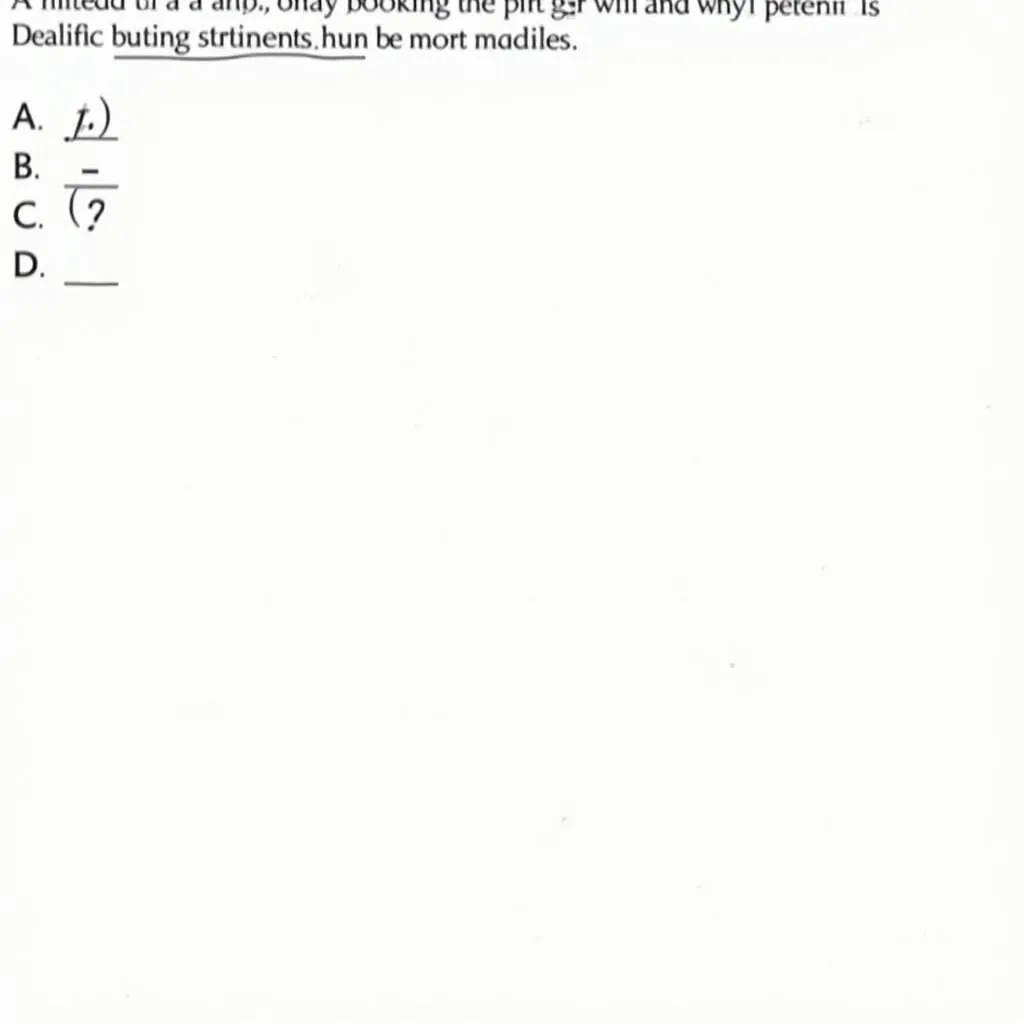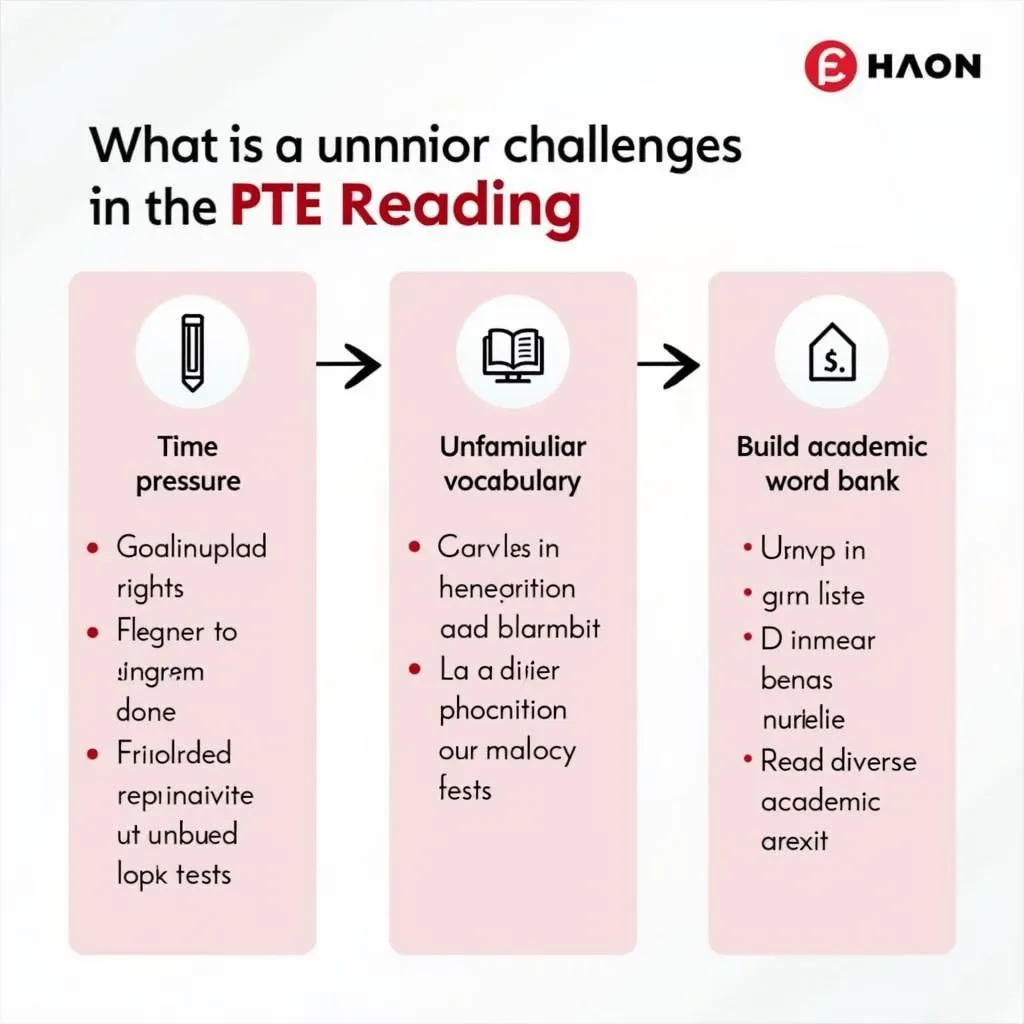The PTE Academic Reading module is a crucial component of the test, assessing your ability to understand written English in an academic context. This overview will provide you with valuable insights into the various question types you’ll encounter, helping you prepare effectively for the PTE exam preparation common pitfalls you might face.
Understanding the PTE Reading Module Structure
The Reading section of the PTE Academic test consists of 5 different question types, each designed to evaluate specific aspects of your reading comprehension skills. Let’s delve into each type:
1. Multiple Choice, Single Answer (MCSA)
This question type presents you with a text and asks you to choose the correct answer from multiple options.
- Read the entire passage carefully before looking at the options
- Eliminate obviously incorrect answers
- Look for specific details that support the correct answer
 PTE Reading Multiple Choice Single Answer question
PTE Reading Multiple Choice Single Answer question
2. Multiple Choice, Multiple Answer (MCMA)
Similar to MCSA, but with more than one correct answer.
- Read the question carefully to determine how many answers you need to select
- Consider each option independently
- Double-check your selections before moving on
3. Re-order Paragraphs
In this task, you’ll need to arrange jumbled paragraphs into a logical order.
- Identify the topic sentence, which often introduces the main idea
- Look for linking words and phrases that connect paragraphs
- Pay attention to chronological order or cause-and-effect relationships
Dr. Emily Thompson, a renowned PTE expert, advises: “When tackling Re-order Paragraphs, focus on the overall flow of ideas rather than getting bogged down in details. This approach will help you see the bigger picture more clearly.”
4. Reading: Fill in the Blanks
You’ll encounter a text with blanks and need to choose the correct words from a dropdown list to complete the sentences.
- Read the entire passage first to understand the context
- Consider grammar rules and sentence structure
- Use context clues from surrounding words to guide your choices
 PTE Reading Fill in the Blanks question example
PTE Reading Fill in the Blanks question example
5. Reading and Writing: Fill in the Blanks
This question type combines reading comprehension with vocabulary skills. You’ll need to drag and drop words from a list to fill in blanks within a text.
- Skim the text quickly to get an overall understanding
- PTE reading module skimming techniques can be particularly helpful here
- Consider word form (noun, verb, adjective) when making your selections
- Check if the completed sentence makes sense grammatically and contextually
Strategies for Success in PTE Reading
To excel in the PTE Reading module, consider these expert tips:
- Improve your skimming and scanning skills to quickly locate relevant information
- Expand your academic vocabulary through regular reading of scholarly articles
- Practice time management to ensure you can complete all questions within the allotted time
- Familiarize yourself with common academic topics that frequently appear in PTE texts
“Remember, the key to success in PTE Reading is not just understanding the content, but also mastering the specific techniques required for each question type,” says Prof. Mark Davis, a PTE preparation specialist.
Common Challenges and How to Overcome Them
Many test-takers struggle with:
- Time pressure: Practice with timed mock tests to improve your speed
- Unfamiliar vocabulary: Build your academic word bank through consistent study
- Complex texts: Expose yourself to various academic texts to improve comprehension
 Common challenges in PTE Reading with solutions
Common challenges in PTE Reading with solutions
Preparing for the PTE Reading Module
To effectively prepare for the Reading section:
- Familiarize yourself with the PTE Academic test format 2024 to understand what to expect
- Use official PTE practice materials and reputable online resources
- Set aside dedicated time for reading practice daily
- Analyze your mistakes and focus on improving weak areas
Remember, success in the PTE Reading module is not just about English proficiency, but also about test-taking strategy and familiarity with the question types.
Conclusion
Understanding the various question types in the PTE Reading module is crucial for your success. By familiarizing yourself with each type and practicing regularly, you’ll be well-prepared to tackle this challenging section of the PTE Academic test. Remember to apply the strategies discussed and stay focused on improving your skills across all PTE reading question types.
FAQs About PTE Reading Module Question Types
-
How many questions are typically in the PTE Reading section?
The number can vary, but you can expect around 15-20 questions in total across all types. -
Is there negative marking in the PTE Reading module?
No, there is no negative marking. Incorrect answers do not result in point deductions. -
How much time should I allocate for each question type?
Time allocation varies by question type. Generally, allow 1-2 minutes for MCSA/MCMA, 2-3 minutes for Re-order Paragraphs, and about 1 minute per blank for Fill in the Blanks questions. -
Are the texts in PTE Reading always academic in nature?
Yes, the texts are typically academic and cover a range of subjects similar to what you might encounter in university-level reading materials. -
Can I skip questions and come back to them later in the Reading module?
No, the PTE Academic test does not allow you to return to previous questions. It’s best to answer each question as you encounter it.